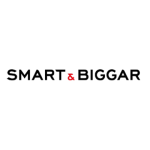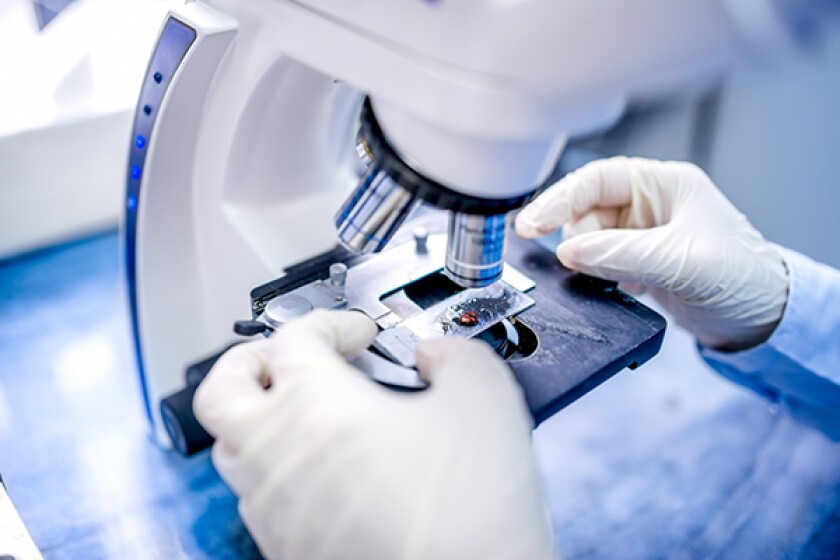Article 27 of the TRIPS Agreement permits member states to exclude from patentability:
Subject matter where necessary to protect ordre public or morality;
Diagnostic, therapeutic, and surgical methods for the treatment of humans or animal; and
Plants and animals other than microorganisms, and essentially biological processes for the production of plants or animals other than non-biological and microbiological processes.
Some jurisdictions have embraced these exceptions purposely. For instance, Article 53 of the European Patent Convention provides that European patents shall not be granted for such categories of subject matter, although some of the exclusions are drawn more narrowly.
In contrast, the Canadian Patent Act has never expressly prohibited patents for methods of medical treatment or diagnosis, or for plants and animals. Moreover, an ordre public provision has been absent from the Act for nearly 30 years, the prohibition in former subsection 27(3) against patenting an "invention that has an illicit object in view" having been repealed in 1993.
|
|
“The importance of medical diagnostic technologies has been brought to the fore with the COVID-19 pandemic.” |
|
|
Rather, the Patent Act defines an invention expansively as any "new and useful, art, process, machine, manufacture or composition of matter [or improvement thereof]" (Patent Act, R.S.C. 1985, c. P-4, section 2) and excludes from patentability only "any mere scientific principle or abstract theorem" (Patent Act, R.S.C. 1985, c. P-4, section 2, subsection 27(8).
Nevertheless, Canada has historically taken a surprisingly begrudging approach to patentable subject matter. For instance, the Supreme Court of Canada has held that a transgenic rodent is ineligible for patent protection (see Harvard College v Canada (Commissioner of Patents), 2002 SCC 76) and, in obiter, indicated that whole plants are also unpatentable (see Harvard College v Canada (Commissioner of Patents), 2002 SCC 76 and Monsanto Canada Inc v Schmeiser, 2004 SCC 34).
The Supreme Court has also held a method for medical treatment to be unpatentable (see Tennessee Eastman Co. et al. v Commissioner of Patents [1974] SCR 111). Although the court's judgment was based on a now-repealed provision of the Patent Act requiring medicinal substances to be claimed only in product by process form, lower courts have subsequently held that methods of medical treatment per se are ineligible for patent protection as encroaching on the skill and judgment of a physician.
As claims broadly directed to a 'use' of a medicine in therapy are permitted (see Apotex Inc v Wellcome Foundation Ltd [2002] 4 SCR 153), the current debate typically concerns claims reciting dosage ranges and regimens. Thus, exceptions from patentability have arisen despite the broad definition of 'invention' in the Patent Act and the absence of statutory proscription.
The importance of medical diagnostic technologies has been brought to the fore with the COVID-19 pandemic. Rarely does a day pass when the media does not report on matters of approval and availability of tests, testing protocols and capacity. As of May 15 2021, Health Canada had approved 68 COVID-19 testing devices, and 100 applications for authorisation were under evaluation. At the same time, patentability of diagnostic technologies has been as fractious an issue in Canada as it has been in the US.
IP offices have grappled with whether a medical diagnostic constitutes a traditionally patentable concrete or physical method or instead is merely an unpatentable and intangible abstract idea, untethered to the physical world. It is a difficult problem because although a new diagnostic tool typically is embodied in a physical device or method, often the principal advance lies in the recognition of a previously unknown correlation.
Diagnostic method claims have not been considered by the Canadian courts. A diagnostic method clearly is not a 'machine,' 'manufacture,' or 'composition of matter,' and the patent office considers that judicially-developed method of medical treatment exception to patentability does not apply in the absence of a surgical step or a therapeutic benefit conferred on the subject (see Canadian Intellectual Property Office (CIPO), Manual of Patent Office Practice, §23.03.01).
Diagnostic methods therefore should be patentable if they constitute an 'art' or 'process.' But Canadian court decisions interpreting the terms 'art' or 'process' have concerned subject matter far removed from diagnostic methods. For example:
A method for subdividing a parcel of building land was held to be unpatentable, superimposition of a plan of subdivision on a larger tract of land not resulting in a change in the character of the land (see Lawson v Commissioner of Patents (1970), 62 C.P.R. 1010 (Exchequer Court of Canada);
A machine operated method of processing well logging data was held to be unpatentable, nothing being new in the use of a computer to make calculations of the type claimed (see Schlumberger v Commissioner of Patents (1981), 56 C.P.R. (2d) 204 (Federal Court of Appeal);
The discovery that certain ethane-sulphinic acids can be employed to regulate plant growth was a 'new and useful art' properly claimed as a plant growth regulant composition and a method for regulating plant growth (see Shell Oil v Commissioner of Patents, [1982] 2 S.C.R. 536 (Supreme Court of Canada);
A method of playing a poker game was held to be unpatentable, the inventors' changes in the method of playing poker not being a contribution to the cumulative wisdom on the subject of games (see Progressive Games, Inc v Canada (Commissioner of Patents), 2000 CanLII 16577 (Federal Court of Appeal); and
A computer-implemented method for 'one click' shopping on the internet was held patentable by the patent office after redirection from the Federal Court of Appeal (see Canada (Attorney General) v Amazon.com, Inc, 2011 FCA 328).
In the absence of any judicial consideration of claims to diagnostic methods, the patent office has had to rely on very general principles drawn from the case law and establish its own guidelines.
Until recently, in assessing patentability, the patent office drew a distinction between a diagnostic method that 'solves a data acquisition problem' and one that 'solves a data analysis problem,' generally only the former being considered patentable. There is an attractive simplicity to the logic behind this division.
An invention solving a data acquisition problem – e.g. providing a new molecular biology technique for detecting 'protein X' in a biological sample – inevitably involves a new method of manipulating or transforming matter, the patentability of which has never been in dispute. But an invention instead solving a data analysis problem – e.g. being the first to relate the presence of 'protein X' from a biological sample to the likelihood a subject suffers from 'disease Y' – might be seen as involving merely a disembodied abstract idea.
If protein X is a known and well-characterised protein, and techniques for quantifying protein X in a sample from a subject are also known, should someone who later discovers that a level of protein X in the blood above a particular threshold indicates that the subject is at risk of developing disease Y be rewarded with a patent? The patentee has the exclusive right to make, use and sell the patented invention, and may exclude others from doing so. What would constitute infringement of the patent?
Indeed, perhaps it was already routine practice to measure a subject's protein X level using a commercially available assay. Would the patent be infringed by a physician reading a patient's medical records, noting an elevated level of protein X, and now appreciating that the patient may be at risk of disease Y?
This is a polarising example, and much hinges on precisely what is claimed in the hypothetical patent, but the broad issue remains. If all that is new is the discovery of the relationship between protein X and disease Y, is that the proper subject of patent protection? Indeed, if the inventor instead published a scientific article disclosing the correlation, the public could make use of the discovery with existing technologies (an assay for protein X). One might argue that granting a patent in such circumstances removes a mere scientific principle or abstract idea from the public domain.
|
|
“Patentability of diagnostic technologies has been as fractious an issue in Canada as it has been in the US.” |
|
|
But the discovery of the link between protein X and disease Y is of undisputable practical value in healthcare, and such innovation should be encouraged. It is consistent with the fundamental patent bargain to promote and reward such advances with time-limited exclusive rights. An analogy can be made patents for second medical uses. Patents routinely grant for new uses of known medicines, e.g. for a different therapeutic indication. The discovery that a known compound has a further therapeutic utility is as much a mere scientific principle or abstract idea as the discovery that a known molecule can be used to diagnose a disease condition. Both are valuable innovations that should be encouraged.
Notably, the patent office has recently broadened its interpretation of patent eligibility in the medical diagnostics field, following a decision of the Federal Court holding that the 'problem-solution' approach to subject-matter eligibility discussed above is improper, albeit in the context of a computer-implemented invention for selecting and managing a securities portfolio (see Choueifaty v Canada (Attorney General), 2020 FC 837).
Pursuant to new 'Examples of Patentable Subject-Matter Analysis' published in November 2020, the patent office indicates that the following claim would fall within the definition of 'invention' in section 2 of the Patent Act as being directed to a patentable 'art' or 'process':
A method of diagnosing whether a human subject is at risk for developing cancer, comprising:
Measuring the level of X in a biological sample from the subject; and
Comparing said level to the level of a non-cancerous reference sample, wherein an increase in the level of X relative to said reference indicates the subject is at risk for cancer.
This is a broad claim, as it appears the 'comparing' step might encompass a purely mental process. But the claim also includes the clearly physical 'measuring' step and the patent office acknowledges that the two elements of the claim must cooperate in order to arrive at a diagnosis of cancer risk, such that the requirement of physicality is satisfied.
In contrast, the patent office indicates that the following claim would not be patentable, having no physical steps whatsoever:
A method of diagnosing whether a human subject is at risk for developing cancer, comprising:
Receiving a report summarising the level of X in a sample from the subject; and
Comparing said level to the level of a non-cancerous reference sample, wherein an increase in the level of X relative to said reference indicates the subject is at risk for cancer.
Indeed, in the latter case, a physician reviewing a patient's medical record and noting that the patient has an abnormally high level of X arguably might infringe the claim merely by recognising that the patient may have an elevated risk of cancer. Merely thinking about something clearly should not constitute patent infringement!
In any event, the recent guidance from the patent office is a welcome step forward, even if it cannot provide all the answers in this difficult area. The 'problem-solution' approach underpinning the patent office's previous approach to analysing medical diagnostic method claims involved deeming as 'non-essential' (i.e. reading out) those claim elements that were not considered to contribute to solving the problem addressed by the invention. Any approach to examination that does not give patentable weight to all express claim limitations appears doomed from the start.
If there can be no fundamental agreement as what the language of the claims means, and what claim limitations or elements will be taken into account in assessing patentability, substantive examination cannot proceed. Perhaps the patent office's recent guidance will allow this impasse to be resolved, and attention turned to assessment of novelty, inventiveness, and sufficiency of disclosure. Rejecting patent applications concerning medical diagnostics on the basis that what is claimed does not constitute a 'method' at all is a blunt tool for assessing patentability in this complex and important area.
Diagnostic technologies are of vital importance, and the patent system must find an appropriate balance to encourage innovation in this area.

David Schwartz
Partner
Smart & Biggar
T: +1 613 232 2542
David Schwartz is a partner at Smart & Biggar. He is a long-standing and highly respected IP leader who brings nearly 30 years of experience in patent law.
An experienced IP leader, David advocates for biotech clients in complex patent prosecution.
David has taught patent law at Queen's University and at the University of Ottawa, and is the past-president of the Intellectual Property Institute of Canada.











